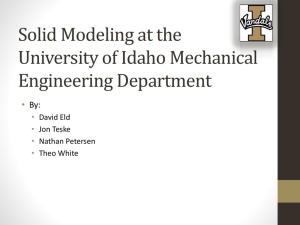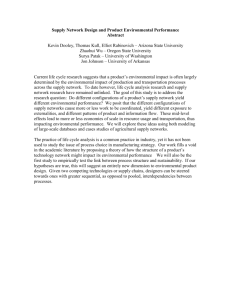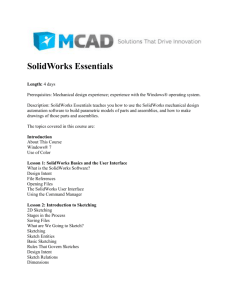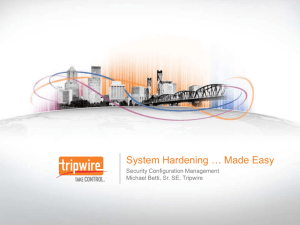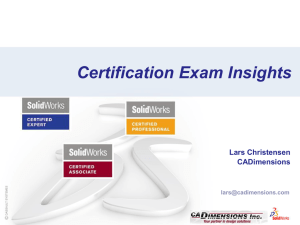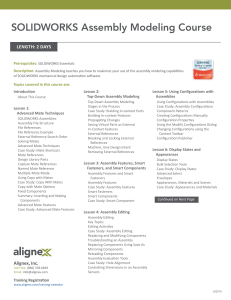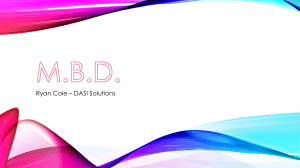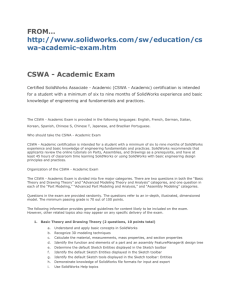CSWP Notes (from Christian)
advertisement
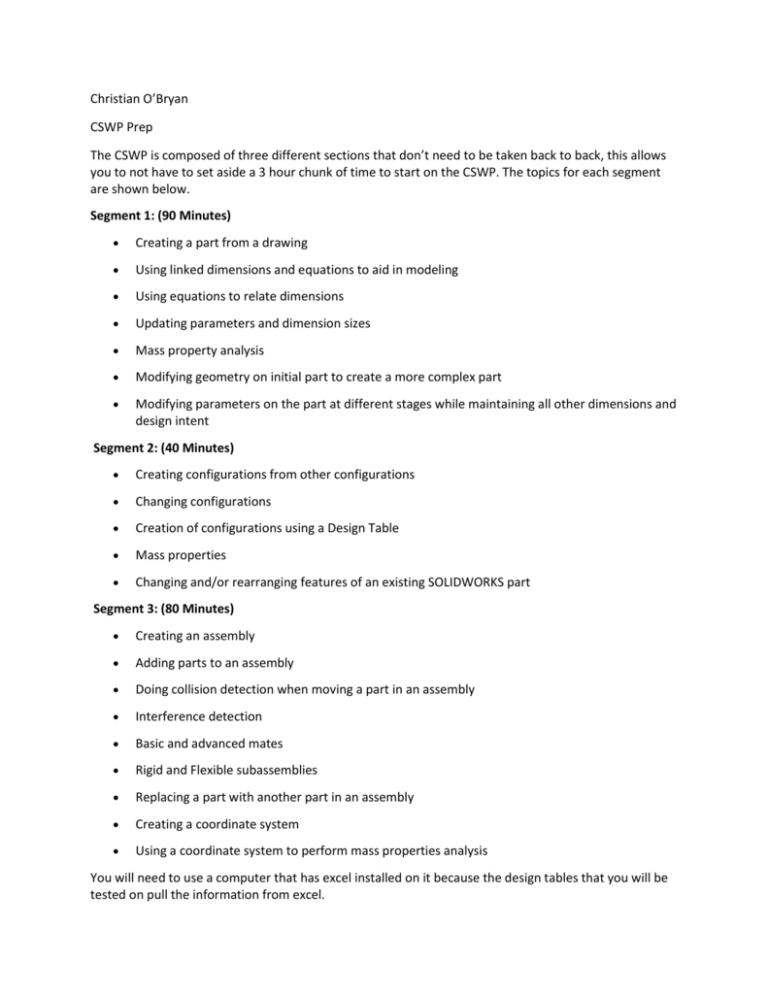
Christian O’Bryan CSWP Prep The CSWP is composed of three different sections that don’t need to be taken back to back, this allows you to not have to set aside a 3 hour chunk of time to start on the CSWP. The topics for each segment are shown below. Segment 1: (90 Minutes) Creating a part from a drawing Using linked dimensions and equations to aid in modeling Using equations to relate dimensions Updating parameters and dimension sizes Mass property analysis Modifying geometry on initial part to create a more complex part Modifying parameters on the part at different stages while maintaining all other dimensions and design intent Segment 2: (40 Minutes) Creating configurations from other configurations Changing configurations Creation of configurations using a Design Table Mass properties Changing and/or rearranging features of an existing SOLIDWORKS part Segment 3: (80 Minutes) Creating an assembly Adding parts to an assembly Doing collision detection when moving a part in an assembly Interference detection Basic and advanced mates Rigid and Flexible subassemblies Replacing a part with another part in an assembly Creating a coordinate system Using a coordinate system to perform mass properties analysis You will need to use a computer that has excel installed on it because the design tables that you will be tested on pull the information from excel. The basic SolidWorks material that you may need to know for the test is as follows. Sketch entities - lines, rectangles, circles, arcs, ellipses, centerlines Sketch tools - offset, convert, trim Sketch relations Boss and cut features - extrudes, revolves, sweeps, lofts Fillets and chamfers Draft Shell Hole Wizard Linear, circular, and fill patterns Linked dimensions Equations Mirror Dimensions Feature conditions – start and end Multi-body parts Rib Feature scope Mass properties Move/Delete face Materials Restraints Inserting components - new and existing Standard mates and advanced mates Reference geometry – planes, axis, mate references In-context features Interference detection Suppression states Move/Rotate component Assembly features Collision detection in an assembly External references Design tables Dimensions and model items A sample practice exam can be found on the SolidWorks website or by following the link below. http://files.solidworks.com/pdf/CSWP-CORE_Sample_Exam.pdf Here are all of the websites that I looked through as prep for the exam. I found them to be very helpful. http://www.3dengr.com/part-one-of-cswp-part-modeling-and-dimension-updating.htm http://www.wholehogtech.com/wordpress/whole-hog-cswp-basic-part-modeling-exampreparation/ http://solidwize.com/passing-cswp/ http://www.3dengr.com/2009/10/cswp-preparation.html http://www.design-point.com/media/152467/Tips_And_Tricks_To_Prep_For_The_CSWP.pdf http://www.hawkridgesys.com/blog/solidworks-cswp-top-10-speed-moves/ http://www.gwlearning.com/CAD/9781605253343/student/resourceCenter/PDF/CSWA_Exam_ Practice_Questions.pdf Below are my findings after passing all of the tests. Test One: This was the first part that they have you build (from drawings). Quite a few of the dimensions on the drawings are given as letters and the values are given later in the problem. The lettered dimensions are the ones that will be changing in the subsequent problems so make sure that you use design tables, global variables or some other way to keep track of all of the changing numbers. The second question just had you change all of the lettered dimensions so if you have them set up right (global variables!) this problem will only take 30 seconds. The third question has you add some cutouts and extrusions noted in the drawings as well as change the lettered dimensions. The fourth question has you change the lettered dimensions again. The fifth and six questions follow the same pattern with adding more details and then changing the lettered dimensions. You do need to be fairly quick with your modeling. I rushed through the test and I barely had enough time to finish. Test Two: The beginning of this test had you work with configurations. Download the part on the test and then work with the configurations to answer all of their questions. If you know how configurations work this will not be hard. The next part of the test was to modify a given part by changing the features in the design tree. This problem was complicated because you were not just cutting away and adding material, you were editing features and this always brings up lots of errors. For one of the questions you have the change the plane a sketch was on and another question had you change the size of the shell feature. You will need to be comfortable working the features in the design tree to do well. Test Three: This test was all about assemblies. I found it to be easier than the assembly test in the CSWA. The first part of the test they have you model the base piece to the assembly. This is now the beginning of the assembly. You add a few pieces to it and find the center of mass to answer the question. The next question had me add a coordinate system which you then use to take the center of mass for the rest of questions in the test. Below is a picture of the finished assembly. You would add a few parts with certain constraints and then find the center of mass, add a few more and find the center of mass again. There is a question that asks you about collision detection as well as interference detection so you need to know how to do that. Final thoughts: Make sure that you add the correct material to the parts! If you don’t you will get the question wrong. Make sure that you are finding the center of mass for the correct coordinate system. Learn how to use design tables or global variables, they will save you so much time.
